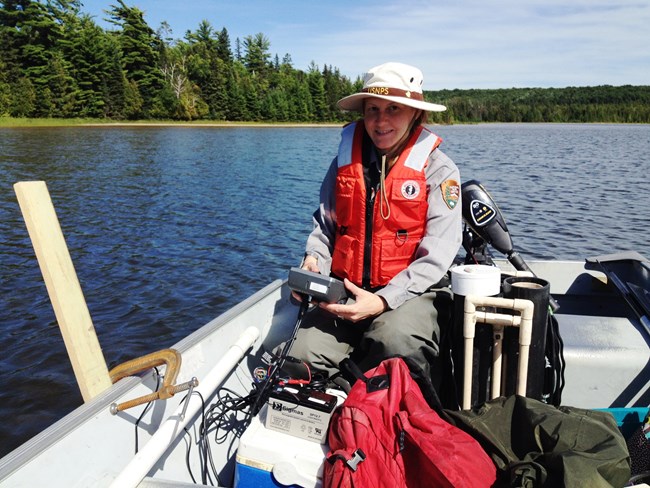
Photo by David VanderMeulen
Water quality can change quickly, and it’s important to detect change as early as possible in order to maximize the potential for effective management actions. Each year, under a monitoring program overseen by staff from the Great Lakes Inventory and Monitoring Network, biological technicians from Pictured Rocks National Lakeshore (like Leah Kainulainen, pictured here) collect water quality data from inland lakes at the park. Similar work takes place at several other national parks in the Western Great Lakes as part of the Great Lakes Inventory and Monitoring Network's monitoring program.
At Pictured Rocks, data on temperature, pH, specific conductance, and dissolved oxygen, and water clarity are collected three times during the summer season. Water samples are also collected and analyzed for dissolved organic carbon, total phosphorus, total nitrogen, nitrate/nitrite-nitrogen, ammonium-nitrogen, and chlorophyll-a during each sampling event. In mid summer, samples are also collected and analyzed for alkalinity, sulfate, chloride, and dissolved silica.
Temperature sensors are deployed in Grand Sable and Beaver lakes. The sensors record water temperatures throughout the water column year round, and provide information on lake mixing and thermal stratification, habitat availability for cold-water fish, and ice on/off dates.
Last updated: September 30, 2019
